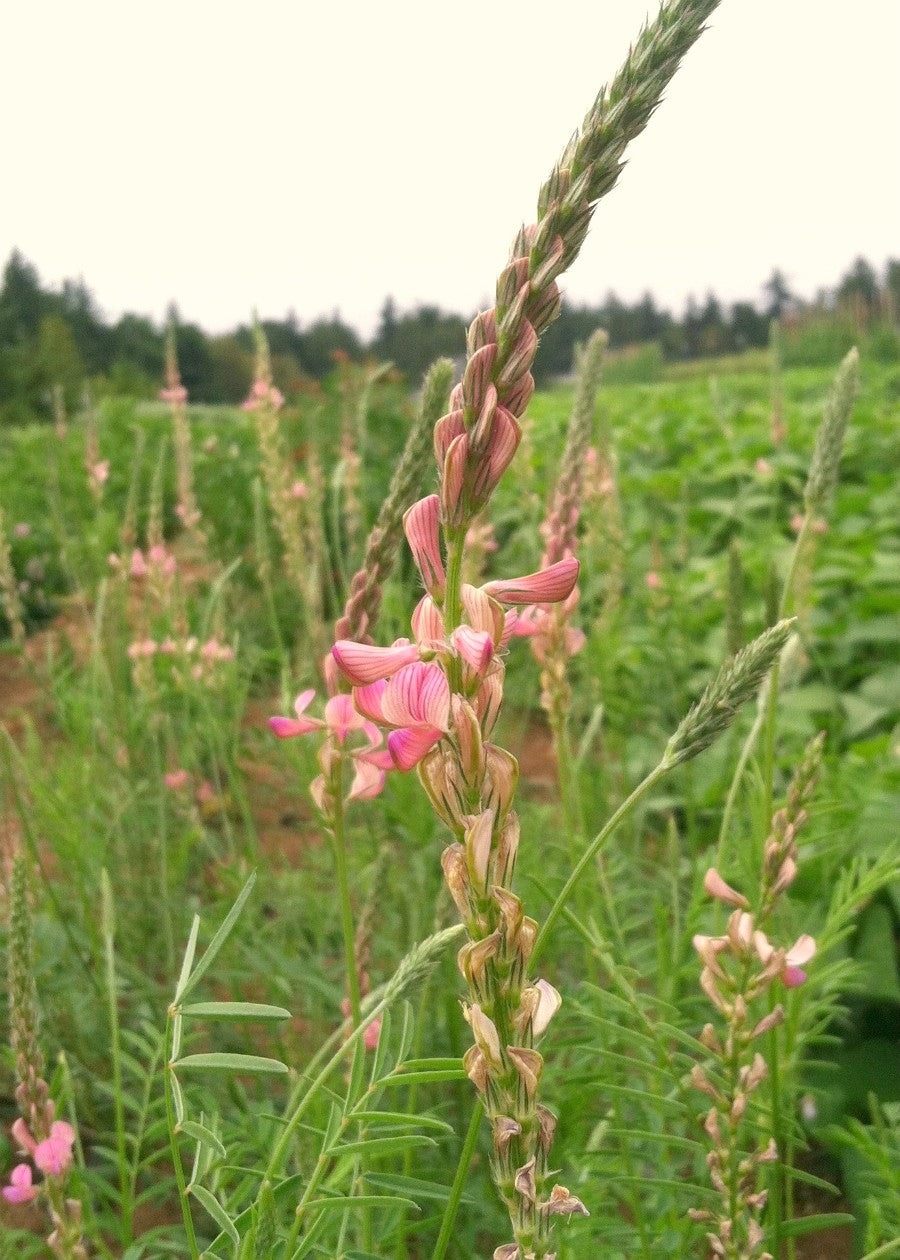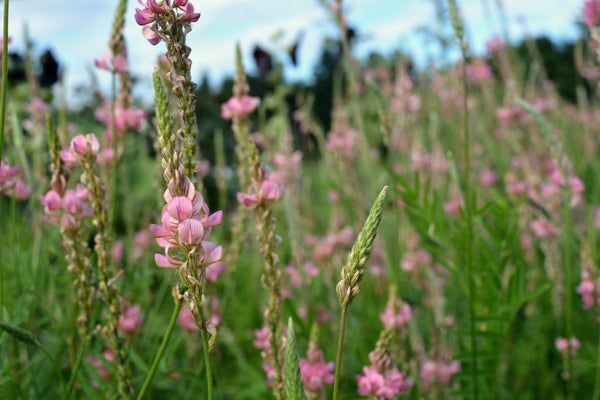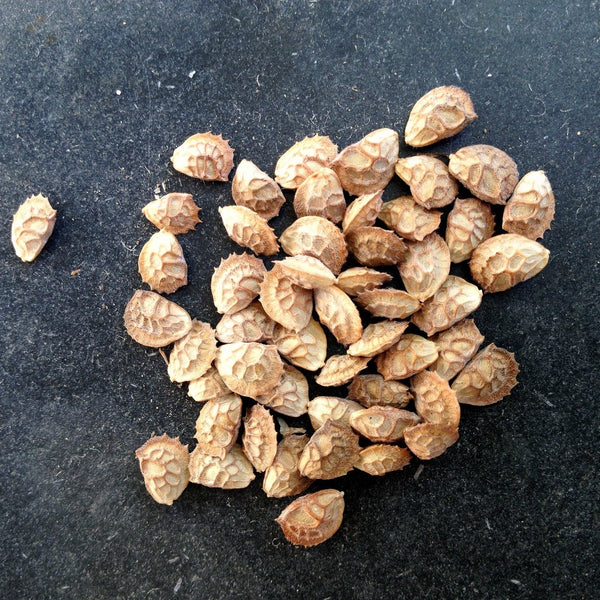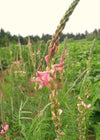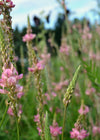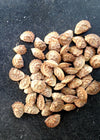Sainfoin
(Onobrychis viciifolia) This leguminous plant is a dry farming specialist and was commonly grown in pasture rotations as high quality, nutritious silage or grazing, up until the green revolution when it was largely replaced by higher-yielding alfalfa. It naturally controls nematodes in the guts of grazing animals and its high tannin content improves available protein uptake. It has been shown to be preferred grazing over alfalfa and clover to the extent that its Latin name means “Devoured by Donkeys” (if you’ve been trying to come up with a band name, you’re welcome). We were drawn to it, however, on account of it being attractive to a different type of animal: bees. Sainfoin is a superior nectary plant and beneficial insect attractor. The waist-high plants, at around 24-30" tall, have the appearance of a delicate, willowy lupine with pinnate leaves and showy pink striped flower spikes. It can perennialize in milder climates but is generally intolerant of wet, saturated soil or high water tables, preferring well-drained alkaline soils so is a better candidate for annual cropping on the west side. With a deep taproot and extreme drought tolerance, it requires little care during dry summers. We are starting to work it into our annual summer cropping plan for its beauty and insectary qualities. An unusual and gorgeous seed to boot! With all these super qualities it also makes a delicate addition to your bouquets and will bloom and bloom provided you cut it.
Spring sown, 80 days to bloom. UO
Packet: 50 seeds
Product Code: FLO-SA-pkt
Availability:In stock
| Translation missing: en.products.general.options | Translation missing: en.products.general.qty | Translation missing: en.products.general.qty |
|---|---|---|
|
$4.50 |
Cart and checkout is temporarily closed as we update our site for the coming season. We will reopen for sales in January.
Growing Info
SOWING:
Sow indoors 6-8weeks before your last frost.
Transplant out after last frost.
Note: Leave for the bees or continue to cut for more and more blooms.
PLANTING DEPTH:
1/2"
SPACING:
6-12""
EMERGENCE:
7-14 days @ soil temp 55-75F.
LIGHT:
Full sun
FERTILITY:
Average. Prefers well-drained, and evenly moist soil (drought tolerant once established) and dislikes saturated, wet soil.
ADDITIONAL NOTES:
Superior nectar plant and beneficial insect attractor.
Keep harvesting for continual cuttings.
Leave for the pollinators, and/or cut stems when flowers are about 1/2 open and expect a vase life of a week.

